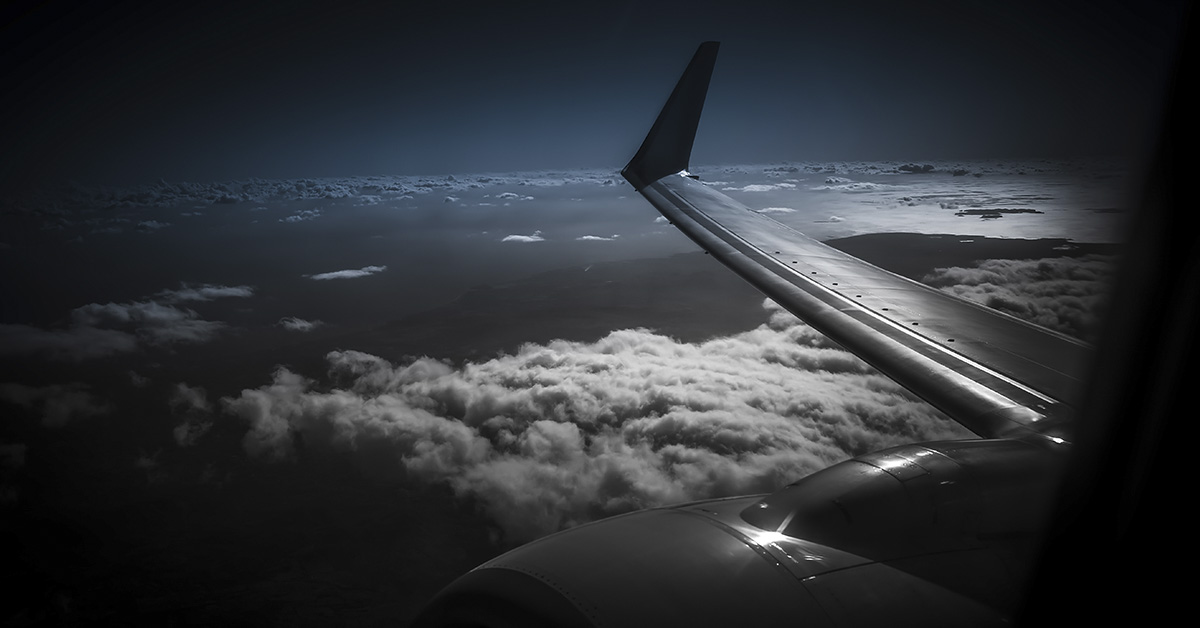In the dark about stars in the sky? Here’s why you can’t spot them during your flight.
Have you ever found yourself on an airplane at night, peering out the window in the hope of catching a glimpse of the stars? It’s a magical sight to behold, but more often than not, it remains elusive. You might wonder, “Why can’t I see the stars from up here?” The answer is a bit more complex than it seems, and it involves factors that come into play during nighttime flights. Let’s delve into this celestial mystery and discover why stargazing from an airplane is not as straightforward as it is on the ground.
The Brightness Battle
Stars, those distant celestial bodies that have captivated humans for millennia, are millions of miles away. Whether you’re gazing at them from the comfort of your backyard or through the window of an airplane cruising at 35,000 feet, the fundamental challenge remains the same.1
During the day, both locations share a common problem: the overpowering brightness of the sun. Stars are virtually invisible during daylight hours, and this applies to all terrains, be it solid ground or the airborne viewpoint. The intense sunlight washes out the luminance of any other celestial object, no matter how near or far it may be. Even the moon, Earth’s closest cosmic companion, can be a challenge to spot during the day despite being a mere 384,000 kilometers away.
Read: World’s first flying car: FAA-approved and available for preorder
No Stars Over the City Lights
When you’re soaring through the night sky in an airplane, you might expect a clearer view of the stars compared to the urban or suburban settings. However, this expectation can be dashed if you’re flying over a brightly lit city or a densely populated area. The phenomenon known as light pollution can make it challenging to distinguish stars from the airplane window.
Light pollution is essentially the excessive artificial lighting that brightens up urban areas, creating a radiant dome of illumination that masks the natural night sky. This skyglow, as it’s called, is a prominent side effect of light pollution and affects both urban and airborne stargazing. In such locations, you’ll find it hard to spot stars due to the overwhelming luminance of the night sky.
Moonlit Sky: Stars in Hiding
A full moon can be a beautiful sight from the ground. However, when you’re on an airplane, its radiant glow can become a hurdle in your stargazing adventure. The moonlight is so intense that it significantly limits your ability to see the stars. In essence, the moonlight floods the night sky, creating a celestial scenario where the stars are overshadowed by the moon’s brilliance.
Cabin Lights Dim Your View
A common factor that can make stargazing from an airplane even more challenging is the cabin’s interior lighting. The lights inside the airplane cabin are necessary for safety and passenger comfort, but they can hinder your celestial views. Your eyes adapt to the cabin’s lighting conditions, which are much brighter compared to the night sky. As a result, your vision struggles to perceive the faint, low-intensity glow of the distant stars.
A Glimpse of the Stars
Despite these challenges, it is indeed possible to catch a glimpse of stars from an airplane window at night. The key to enhancing your chances lies in making certain adjustments, both within and outside the airplane. Here are some strategies that can transform your flight into a stargazing adventure:
Dim the Cabin Lights: To increase your likelihood of spotting stars, consider dimming or turning off the cabin lights temporarily. This reduction in artificial lighting allows your eyes to adapt to the darkness, making it easier to identify the faint glow of stars.
Block Ambient Light: If dimming the cabin lights is not an option, you can use a piece of clothing, like a blanket, to cover your head. By doing so, you block out most of the ambient light that interferes with your stargazing experience.
These strategies may not completely replicate the pristine darkness of the natural night sky, but they do help your eyes adjust to minimal lighting conditions. With patience and some creativity, you can enhance your chances of seeing those distant celestial bodies during your flight.
So, the next time you find yourself on a nighttime flight, gazing out of the window with the hope of seeing the stars, remember the celestial factors at play. From the overpowering brightness of the sun to light pollution, the challenges are manifold. However, with some adjustments and a dash of patience, you can unlock the magic of the night sky even from high above the Earth. Stargazing from an airplane might not be the same as from your backyard, but it’s an adventure worth embarking on. Happy stargazing!
Keep Reading: Science confirms these parts of the Bible

